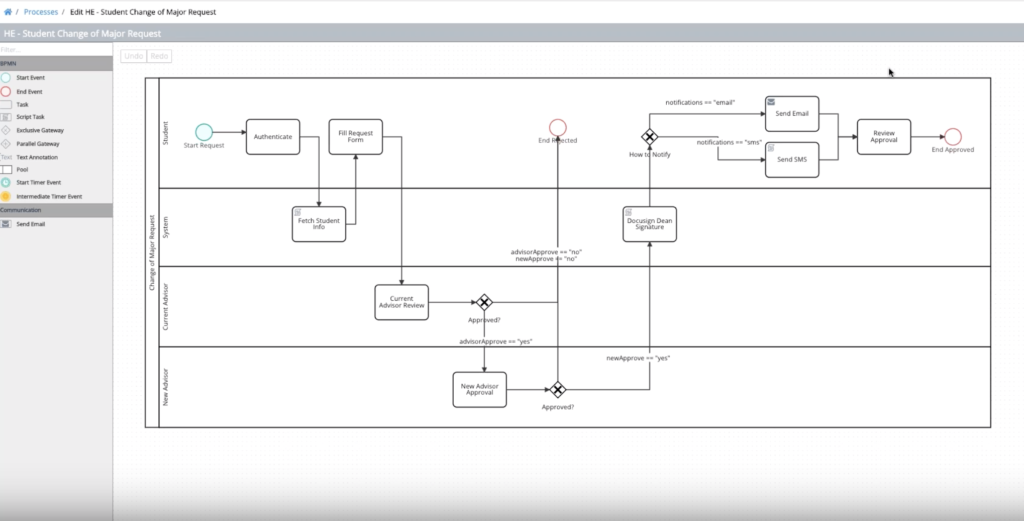Higher education institutions, like any other public-facing organization, run on interactions between departments, individuals and the public. These interactions are usually complex in nature and include a variety of objectives such as student enrollment, budget management, and daily operational tasks. If you are completing these processes manually, then you already know that they consist of a lot of busywork and are far too time-consuming. These tasks become repetitive and prone to human error. That’s where automation can help higher ed institutions.
In the past, in order to do something as simple as a grade change, the student had to fill out a paper form and get various signatures across campus. Then, they had to submit it to the Registrar’s office where an admin manually entered the grade change. What happens if that admin lost that piece of paper? Or if the admin enters the wrong grade on accident? That student would have to do the entire process all over again.
Now in an automated grade change process, the student would only have to meet with the instructor and initiate a grade change through the university’s web portal. Once this request is made, it is sent to the proper faculty members. If the faculty members approve of the grade change, then the grade is automatically changed in the system. No lost paperwork, no hunting down staff, no more chaos. Automation, along with the proper business process management software, helps eliminate human error and takes over repetitive tasks that normally bog down workers. In order to see what tasks you can automate, start by conducting a review of your current workflows. Next, monitor your current processes for inefficiencies and create a roadmap for automation.
Some types of higher ed processes that are commonly automated:
- Registration/Registrar
- Research
- Staff development
- Community relations
- Alumni relations
- Careers
- Counseling
- Finances
- Safety
Automating internal higher ed processes
By implementing workflow automation, universities are able to improve the student experience. Below is an example of a workflow that can be used to speed up a very common administrative process at universities: a change of major request:

- The student requests a change of major through an external web portal, which sets the workflow in motion.
- The student authenticates into the workflow tool.
- After authentication, the student is able to access the request form and submit it.
- The submitted request is automatically routed to the student’s advisor for approval.
- If the request is denied, it stops the workflow and sends a notification to the student to notify them of the rejection.
- If the request is approved, it sends a record of the approval to the student’s email and an SMS notification to the student’s phone number.
Since students are expecting instant gratification when it comes to their interactions with their university, automation of this simple task promotes a better student experience. This an example of a simple workflow, but if more restrictions are required those instances can be applied as well.
Another example of task level automation found in admissions is the numerous phone calls received on a daily basis right around the start of each semester. Something as simple as adding an automated chatbot on your university’s website will help free up the admissions counselors to do other tasks. Case in point, Tim Renick, GSU’s dynamic VP for Enrollment Management and Student Success, stated that in the run-up to the start of each semester, his team can receive as many as 2,000 calls a day. That’s a volume GSU cannot handle: “We’re not American Express. We don’t have a call center with 200 people.”
The future of automation in higher ed
As everything becomes more interconnected with IoT devices and omnichannel marketing, it becomes easier for departments to manage operations, student relations, and a range of other responsibilities with automation. At the same time, this poses a challenge to the security of highly sensitive data that universities have stored online or on-premises. Additionally, this data has still yet to be fully used to serve students by higher ed institutions to benchmark student progress, improve curriculums, generate targeted marketing, and more. As with all tasks involving, universities must be sure they are using automation in an ethical manner that helps students. Universities need to prepare for the advantages and challenges of a higher-ed future that is automated, streamlined, and digital.





